Are yards doing the hard yards?
Are new-build shipyards doing enough to improve their in-house sustainability processes as the clock ticks down to the looming deadline of 2030?
Improvements in the design and operational impact of superyachts often attract attention and make headlines. However, everyone within the industry plays a role in enhancing sustainability, and shipyards are just one of these groups.
While designers’ choices affect the impact of the usage phase of a superyacht’s life cycle, shipyards are responsible for the ‘cradle-to-gate’ element of a superyacht. The impact of these steps depends heavily on the facilities, materials used and processes the ship-yard employs.
Reducing these impacts will be a particular priority for many shipyards in the EU as the Corporate Sustainability Reporting Directive (CSRD) comes into effect over the coming years. This requires them to assess their impacts and implement plans and strategies to reduce them. Therefore, many new-build shipyards will need to catch up with other manufacturing industries such as luxury cars, aviation and even refit yards like Amico & Co and MB92 – all of which are regularly publishing sustainability reports.
As environmental, social and governance (ESG) requirements increase, shipyards will benefit from implementing strategies to reduce their impacts and demonstrate progress. Legislative and other mandates will drive actions covering various aspects of sustainability. As well as environmental impact reduction, it’s crucial to address all facets of sustainability. This necessitates incorporating sustainability into business operations through diverse approaches to achieve set targets.
New-build shipyards represent a sector of the industry still in the nascent stages of its sustainability journey. This is evident from the lack of relevant reports and the cautious language used by yards in their responses, such as ‘investigating’ and ‘looking into’ when addressing future activities and choices.
While such language demonstrates intent from shipyards, there appears to be a disconnect between this intent and tangible actions with measurable impact reduction achievements or defined strategies. Vague, uncertain elements within sustainability efforts may not meet the increasingly stringent ESG-related requirements that will apply to these shipyards in the future.
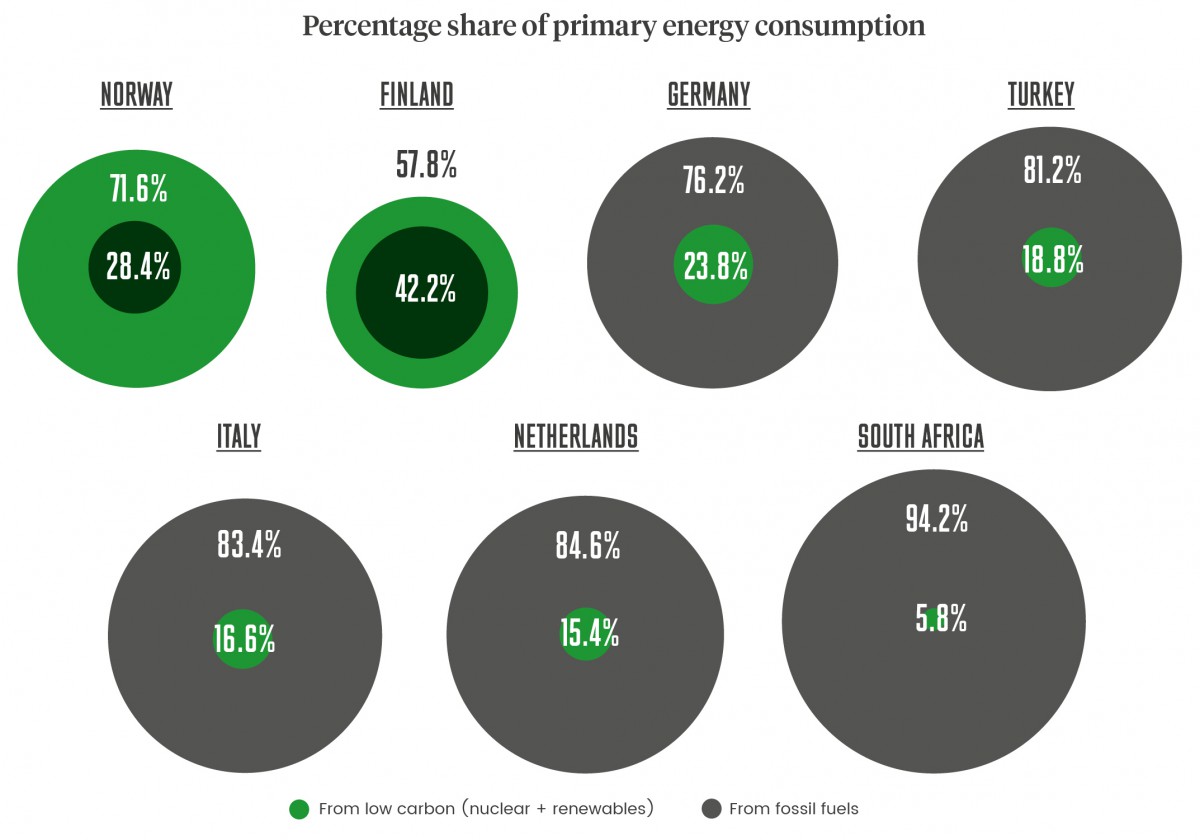
We contacted multiple superyacht shipyards to find out what they are doing to reduce their impact. While there’s no single solution, learning from the steps taken by a diverse range of yards, manufacturing in equally diverse regions, paints an intriguing picture of how far the industry has come … and how far it still has to go.
Among the most referenced impact reductions from the yards we spoke to was that of energy usage within the facilities. As we all have undoubtedly seen over the past few years, many shipyards are installing solar-panel arrays. However, even a cursory look at the maths shows this can account only for nominal savings compared to the overall energy needs across an average new-build process.
A far more significant lever is purchasing energy from renewable sources. Baltic Yachts sets an example with some of the best energy sourcing available. Its location in Finland allows for all power used in its production facilities to be sourced locally from wind farms and hydropower facilities. This renewable energy will be the lowest impact type of energy available – commendable, but this is due to the progressive energy policies in Finland.
Not all production facilities will be able to attain this level of low-impact energy supply. One example of this is Southern Wind, in South Africa. As seen in the graphic below, South Africa’s energy consumption is sourced almost entirely from fossil fuels, whereas Finland’s is less than half from fossil fuels. This energy-supply issue contributed to a life-cycle assessment (LCA) carried out by Southern Wind into its new-build and existing fleet, which found that electricity was a significant contributor to the impact of its yachts.
The goal of achieving a majority or total renewable energy supply is a common element found in the reports of other similar industries that have progressed further in sustainability than the superyacht industry. For instance, Aston Martin, Learjet and Textron have successfully operated one or more of their production facilities on 100 per cent renewable energies. These sustainability reports from comparable industries offer valuable insights into the potential trajectory of the superyacht industry.
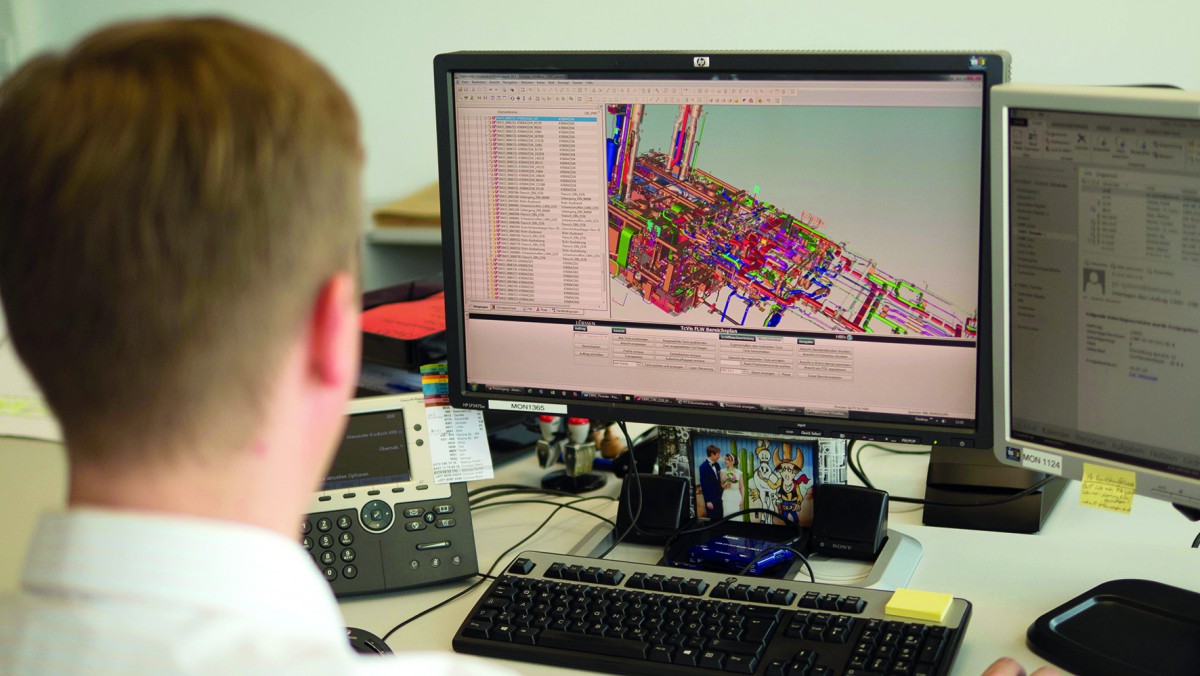 Lürssen’s digitalisation of piping to prevent waste
Lürssen’s digitalisation of piping to prevent waste
Image © AlexanderKodisch
Another prevalent theme among shipyards, as well as other industries, is waste reduction. This involves two primary factors: firstly, reducing waste generated in the first place, which decreases the demand for raw materials, and, secondly, maximising waste that will be recycled or repurposed, thereby increasing the supply of recycled materials and reducing reliance on landfill or incineration disposal methods.
Shipyards have prioritised waste reduction by enhancing manufacturing efficiency, yielding significant benefits for business operations. This approach not only reduces material costs, but also minimises expenses related to waste storage, processing and disposal.
For example, Sylke auf dem Graben, marketing team leader for Lürssen, confirms Lürssen employs digitalisation in its piping workshop to streamline processes and cut waste, while Southern Wind optimises material use through IT and data systems. Feadship focuses on reducing packaging waste from the supply chain and using more easily recycled options, and Baltic Yachts has quantified its efforts, achieving more than a 10 per cent reduction in waste per labour hour.
Among the shipyards surveyed, Baltic Yachts stood out for achieving zero unsorted waste by utilising the Finland-specific KiMuRa-route scheme to recycle industrial composite waste. Feadship is also using additional recycling programmes for its range of waste materials, which includes a national scheme to repurpose wood waste, and facilities that utilise non-recyclable waste to generate heat/electricity.
Teak, in particular, poses sustainability challenges due to high demand outpacing its replenishment rate. While technically renewable, the rate of consumption exceeds the pace of new growth.
As industry reports increasingly emphasise waste-reduction goals, such as those found in Damen Yachting’s and Fincantieri’s sustainability reports, we can anticipate more evaluation of such efforts in the superyacht sector. For instance, Learjet’s 2022 sustainability report showcased a notable achievement of over 800 metric tons of waste reduction across more than 90 projects, setting a benchmark for the industry.
Improvements in waste-disposal routes must be accompanied by shifts in the materials used in superyacht construction. Teak, in particular, poses sustainability challenges due to high demand outpacing its replenishment rate. While technically renewable, the rate of consumption exceeds the pace of new growth. Despite this, teak’s unique qualities for maritime use make it difficult to replace with more sustainable alternatives.
Consequently, considerable focus, research and development have been directed towards finding suitable substitutes. Lürssen collaborated with the University of Göttingen to develop the patented Tesumo material, offering an alternative to teak. Similarly, Southern Wind employs maple decking as a sustainable option.
Recycling waste is one part of circularity, the other is utilising recycled materials. Examples of this from shipyards are Feadship using recycled metals or Southern Wind using recycled PET core materials in construction. Using recycled materials is better because it has reduced impact from both the disposal of materials and impact savings from cutting the amount of material production required.
Another approach is to obtain locally sourced materials to reduce associated transport emissions – a priority for Baltic Yachts. However, Pamela Honga, head of quality and sustainability at the company, explains, “Sometimes customer choices and the scarcity of specific items need to come from abroad.” In such cases, efforts are made to ship these items in bulk and organise common transport routes to minimise additional transport emissions.
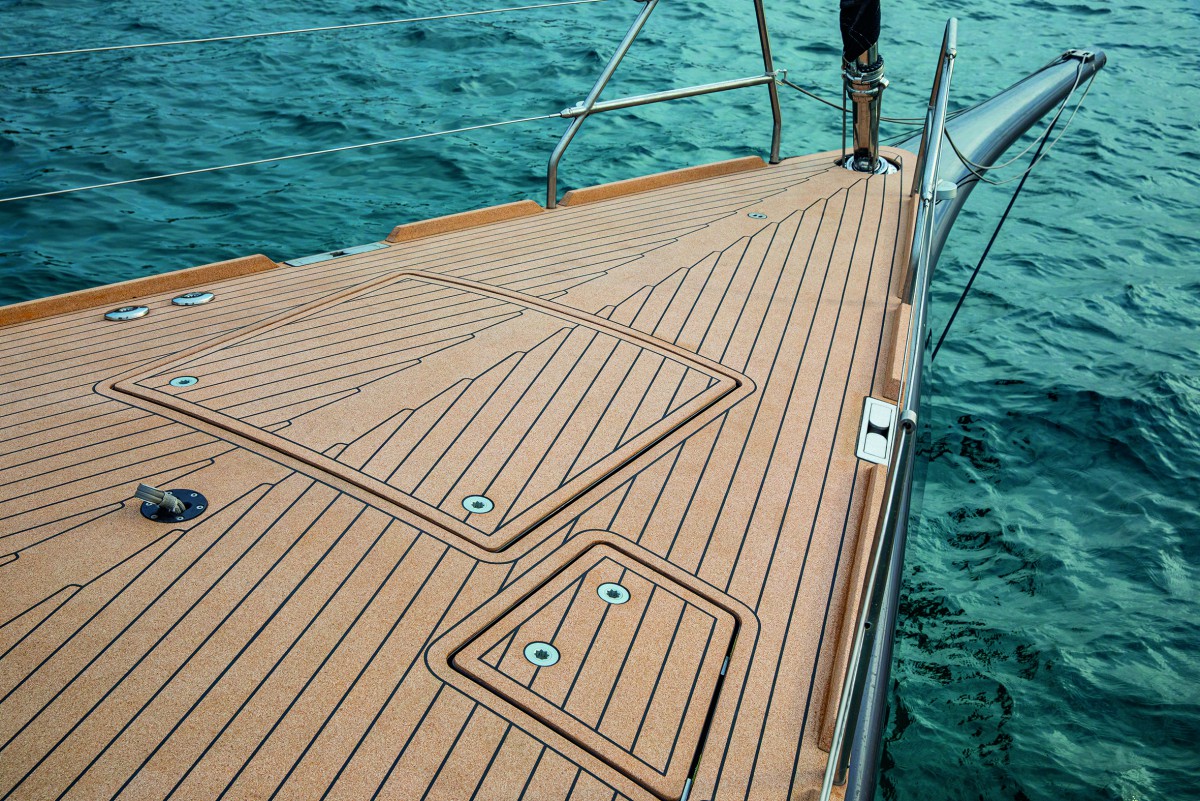 Baltic Yachts’ Pink Gin Verde comes with a durable alternative cork deck material from Marinedeck exterior
Baltic Yachts’ Pink Gin Verde comes with a durable alternative cork deck material from Marinedeck exterior
Image © YachtShot
This reflects a broader effort within the industry to advance sustainability. Umberta Bassino, marketing and communication manager at Southern Wind, emphasises the need for support from the supply chain, highlighting the importance of engaging with suppliers to drive improvements collaboratively.
Both Feadship and Southern Wind have expressed their commitment to prioritising preferred supplies, equip-ment and materials. This underscores the growing demand for environmentally friendly construction materials, with increasing pressure for external certification or scientific validation of their sustainability credentials.
An external example of this approach is Aston Martin’s requirement for suppliers to comply with ISO 14001, an environmental management system standard. Presently, 95 per cent of its suppliers have attained this certification. This underscores the potential benefits for suppliers to invest in the development of suitable alternatives for shipyards, exemplified by Lürssen’s co-creation of a teak alternative.
In addition to the activities men-tioned above, there are also investments to be made directly in the shipyard facilities themselves into equipment that improves efficiency and other methods to reduce consumption or emissions associated with the running of the yard.
One example of this is Feadship’s goal of becoming carbon-neutral by 2030. Specifically, Feadship aims for 95 per cent reductions for Scope 1 and 2 greenhouse gas emissions and around 45 to 65 per cent for Scope 3 by 2030. This is planned to be achieved through extensive investments such as new machinery, installing smart systems, changing lighting systems, and optimising heating, cooling and ventilation systems. These measures will reduce consumption and emissions but the company is also looking to break away from fossil fuels which, while unspecific, can be assumed to be similar to other changes such as that made by refit yard Cantiere Rossini to replace diesel with HVO for on-site equipment.
Lürssen, too, is investing in energy-consumption changes at its facilities, utilising LED lights among wider plans to implement more energy-efficient options for facades and windows, alongside emission control and filter technology.
Baltic Yachts has implemented a different approach to reduce emissions by consolidating all of its staff at one location – in Pietarsaari, Finland. This strategic move is expected to result in reduced energy consumption and emissions as the shipyard will run less equipment such as lights and heating.
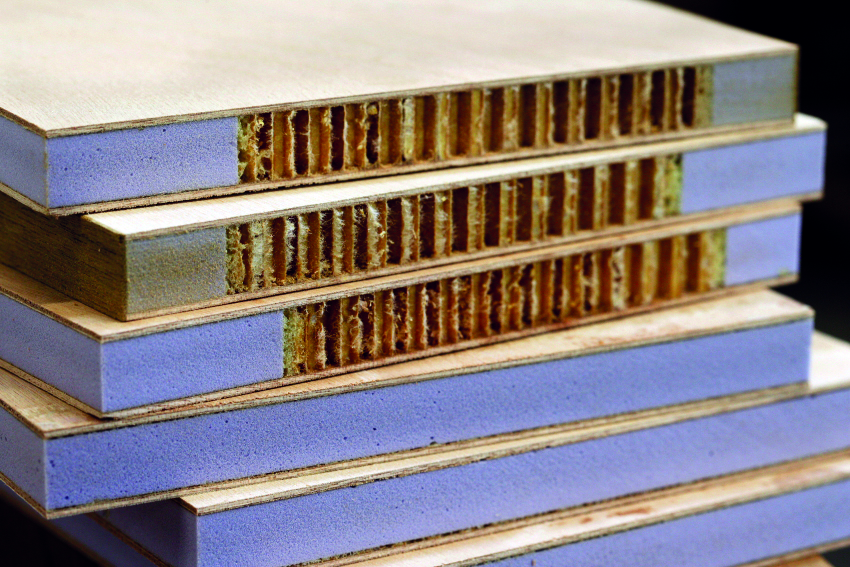 Southern Wind uses recycled PET core materials in construction
Southern Wind uses recycled PET core materials in construction
Many shipyards are also enhancing their business operations. For example, Lürssen’s energy-efficient refurbishments not only reduce energy consumption but also lower energy costs. Baltic Yachts achieved a 10 per cent economic saving by switching to renewable energy supply. Additionally, waste-reduction efforts contribute to reduced material costs. However, some of these benefits may be offset by the higher costs of alternative materials or improved products used.
The key question revolves around whether clients are willing to absorb additional costs in the pursuit of life-cycle and shipyard sustainability. As reduced impact practices become more widespread, uncertainties remain as to the effect this will have on the operational efficiency of the yards. Will they be incorporated into overall cost increases, such as those driven by inflation or changes in material supply, or will there be pushback from clients despite the efforts of the shipyards?
Ideally, clients will align with the trend seen among consumers generally, who are increasingly willing to pay for sustainability. For instance, a 2021 Deloitte study found that 67 per cent of participants were willing to pay up to 41 per cent more for products if they were sustainable.1
One critical aspect in this early stage of shipyard sustainability evaluation is understanding the impact of current actions. Feadship has established 2022 as its footprint baseline, while Southern Wind conducted a Life Cycle Assessment (LCA) on one of its builds, SW105-05 Sørvind, and its existing fleet to assess the environmental impact of its vessels from cradle to grave.
Once the current impacts are understood, it can inform the next steps. Charlotte van de Kerk, programme manager sustainability at Feadship, highlights the importance of using emissions data to make informed decisions that consider environmental impact in short- and long-term investments.
The key question revolves around whether clients are willing to absorb additional costs in the pursuit of life cycle and shipyard sustainability.
Paul Dumbell, planning and control manager at Southern Wind, explains that the LCA has helped clarify areas of increased impact. “I expected freight to have a high impact and electricity to be negligible, but freight turned out to be less than expected and the electricity we use in manufacturing is quite significant,” he says. This quest for understanding is also reflected in the research many yards are undertaking into viable alternatives for use in manufacturing.
Measuring baseline impacts not only allows for quantifying savings but also provides valuable data to be communicated in the future, thereby enhancing sustainability-related credentials. This communication is likely to take the form of reports published by shipyards, currently uncommon among new-build yards, although a few reports have been published by refit yards.
Drawing on lessons from industries further along in their sustainability journeys can help our industry catch up and accelerate sustainability efforts more rapidly. Another aspect to learn from these industries is how they ensure progress in these areas, mainly by integrating sustainability progression into the overall success of the business. This will involve continued measure-ment of various impact aspects and linking them to key performance indi-cators (KPIs) of the business.
While we await further details on Lürssen’s KPIs when it publishes its CSRD-related documents, Baltic Yachts has shared that its current KPIs focus on the energy usage of its facilities and specific pollutants such as volatile organic compound gases from certain products, such as paint used within the facilities. Efforts are also underway to include CO2 scope 1, 2 and 3 emissions in future KPIs.
Setting goals within a business is one aspect of progressing sustainability, but it’s equally crucial to invest appropriate time, resources and manpower into these efforts to ensure their attainment. This requires the support and advocacy of senior figures within shipyards. Shipyards employ various methods to facilitate this, including having a dedicated sustainability team, as at Baltic Yachts, or through the efforts of employees appointed to specific positions to address targets.
Achieving these goals and sharing them through published reports will not only demonstrate proactive action towards sustainability, but also address the growing demand for transparency surrounding sustainability efforts. As expectations rise for company sustainability credentials, openness in sharing this information becomes increasingly important. Moreover, such transparency fosters collaboration, whether with suppliers, initiatives such as Water Revolution Foundation or with other shipyards.
Working together on these efforts could accelerate progress in shipyard sustainability, leading to increased impact reductions or faster timelines. Collaboration is key to driving meaningful change in the industry. Indeed, many sustainability efforts within the industry are aligned with the deadline of 2030, such as the Paris Agreement’s target of achieving a 43 per cent reduction in greenhouse-gas emissions by that year, as well as Feadship’s greenhouse-gas-emissions-reduction target.
With only six years until 2030, the gap between the current state of the industry and the goals that need to be achieved seems considerable.
Feadship’s plan to achieve carbon neutrality involves extensive investments in new machinery, installation of smart systems, upgrades to lighting systems as well as optimisation of heating, cooling and ventilation systems. While these activities will undoubtedly reduce consumption and emissions, the broader objective also includes transitioning away from fossil fuels, which will require significantly more investment (and published data) in order to be realised and verified.
However, with only six years until 2030, the gap between the current state of the industry and the goals that need to be achieved seems considerable. There’s currently no clear pathway from where the industry stands now to where it needs to be by 2030 if it is to meet these ambitious targets.
It’s evident that shipyards have various avenues to progress sustainability by adopting a holistic approach that encompasses operations beyond just improving the impact of yachts. By incorporating sustainability into their operations, yards can achieve impact savings and reduce the environmental footprint associated with the entire life cycle of superyachts, from cradle to gate.
There may be questions about whether the goals of individual shipyards will be ambitious enough to drive significant improvements, especially if renewable energy use falls short of reaching 100 per cent, as seen in other industries. Additionally, even if ideal scenarios are achieved, some avoidable impacts may persist, necessitating offsetting measures where relevant. Challenges such as material consumption will also be harder to address.
Despite being in the early stages of the sustainability journey, shipyards are focusing on understanding and researching strategies and actions to achieve unspecified goals. We can anticipate an acceleration in the publishing of formalised efforts and relevant information in the near future.
Observing how shipyards and the wider industry work to improve the impact of the early life of a superyacht will be fascinating, and the imperative is on us, as clients and observers, to look beyond the press releases.
1. Monitor Deloitte, Sustainability as a value driver – How sustainability elevates product innovation and price differentiation. December 2021.
This article first appeared in The Superyacht Report – New Build focus. To gain access to The Superyacht Group’s full suite of content, publications, events and services, click here to join The Superyacht Group Community and become one of our members.
In the upcoming June edition of The Superyacht Report – Captains focus, we will explore the eco guidelines of the Water Revolution Foundation. These guidelines, sourced directly from and by the crew, aim to aid daily operations towards ‘eco-friendlier’ on-board practices.
NEW: Sign up for SuperyachtNewsweek!
Get the latest weekly news, in-depth reports, intelligence, and strategic insights, delivered directly from The Superyacht Group's editors and market analysts.
Stay at the forefront of the superyacht industry with SuperyachtNewsweek
Click here to become part of The Superyacht Group community, and join us in our mission to make this industry accessible to all, and prosperous for the long-term. We are offering access to the superyacht industry’s most comprehensive and longstanding archive of business-critical information, as well as a comprehensive, real-time superyacht fleet database, for just £10 per month, because we are One Industry with One Mission. Sign up here.
Related news
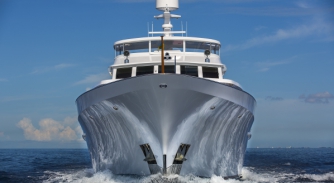
AkzoNobel receives Sustainable Solution verification from WRF
The accolade for the firm’s Awlgrip HDT marks the first high-performance yacht topcoat to receive the title
Crew
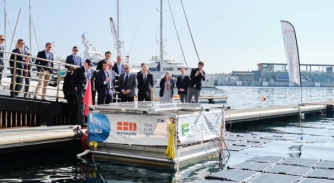
Green hydrogen arrives in Monaco
Yacht Club de Monaco and SBM Offshore have launched a platform to provide green hydrogen in Monte Carlo part of a ‘responsible yachting’ initia
Crew
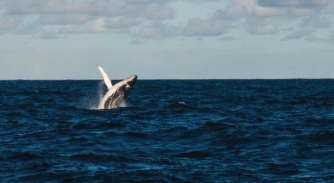
The blue carbon investment
Last year was the hottest on record for the world’s oceans, so how can blue carbon initiatives from the superyacht community help protect them?
Opinion
-(3).jpg)
Crew guidelines go green
The superyacht industry has introduced technical solutions for energy transition, but changes in on-board practices are equally important
Crew
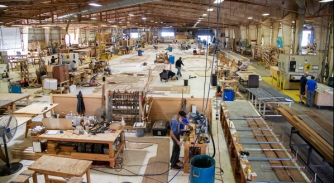
The teak critique
We analyse the sustainability of the desire for teak decking in view of the projected increase in demand from yachts in refit
Owner

‘If we build sustainably, they will come’
MB92’s Rob Papworth and Philippe Bernard discuss the changing landscape of refit, new technologies and a shortage of skilled workers
Business
Related news
Green hydrogen arrives in Monaco
2 years ago
The blue carbon investment
2 years ago
Crew guidelines go green
2 years ago
The teak critique
2 years ago
‘If we build sustainably, they will come’
2 years ago
NEW: Sign up for
SuperyachtNewsweek!
Get the latest weekly news, in-depth reports, intelligence, and strategic insights, delivered directly from The Superyacht Group's editors and market analysts.
Stay at the forefront of the superyacht industry with SuperyachtNewsweek



